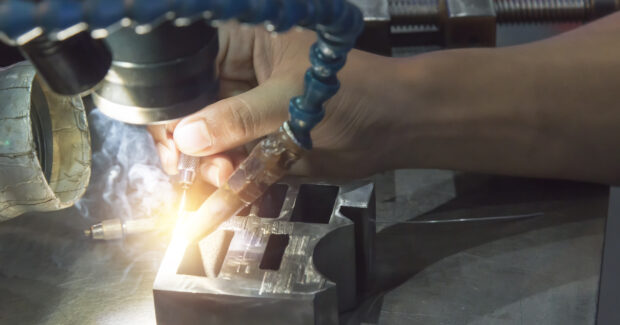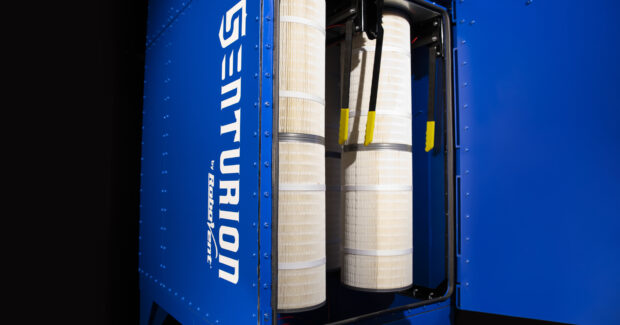Is Your Dust Collector NFPA Compliant?
Reduce your risk of a dangerous dust collector fire or explosion with investments that will pay dividends in safety.
Posted: April 19, 2023

Metalworking dust can create a significant combustion risk of a combustible dust explosion–and some metals, such as aluminum, can produce very violent explosions. Manufacturers working with combustible metal dusts must have an NFPA-compliant dust collection system. Here’s how to make sure your system is safe and compliant.
NFPA Compliance for Dust Collectors
The National Fire Prevention Association (NFPA) develops fire and explosion protection standards for industrial systems, including dust collection systems. While these standards do not have the force of law, they are the basis for regulations from the Occupational Safety and Health Administration and other regulatory bodies, which do. There are several NFPA standards that apply to metalworking facilities, including NFPA 652, Standard on the Fundamentals of Combustible Dust and NFPA 484, Standard for Combustible Metals. There are also standards specific to system design, including:
- NFPA 68, Standard on Explosion Protection by Deflagration Venting
- NFPA 69, Standard on Explosion Prevention Systems
These standards outline the precautions that manufacturers must take when working with and handling combustible dusts or using processes (such as metal grinding, polishing, laser cutting, etc.) that produce combustible dust. Some of these include:
- Conducting a dust hazard analysis, which may include material testing to determine the explosive potential of the dust, process hazard analysis to identify areas where an explosion could occur, and mitigation recommendations.
- Implementing engineering controls (such as dust collection) to reduce buildup of hazardous combustible dust.
- Instituting housekeeping standards, employee training and other administrative controls to ensure safety and compliance when working with combustible dust.
The standards also lay out specific requirements when it comes to dust collection system design, installation, maintenance and testing. A dust collection system is critical for reducing combustion risks for the facility as a whole, but it also represents a significant combustion risk by itself. Following NFPA standards for dust collectors is essential to minimize these risks.
Four Steps to Dust Collector Safety
NFPA standards for dust collectors are complex, but there are some basic considerations to be aware of for dust collector fire and explosion safety.
- Spark Control
When using spark-producing applications, a spark arrestor should be used to prevent hot embers from entering the system. Types of spark control systems include screen/metal mesh spark traps, centrifugal spark arrestors, baffle systems and active detect-and-suppress systems.
2. Fire/Smoke Detection
The dust collector should be equipped with a fire/smoke detector that will sound an alarm if a fire starts inside the collector and, ideally, automatically shut down the blower and close a damper to stop the flow of air. A dual thermal/ionization smoke detector is recommended for dust collectors.
3. Fire Suppression
All dust collectors should also be equipped with a fire suppression system in case a fire does break out inside the collector. For combustible metal dust, a chemical fire suppressant (such as a clean agent gas or dry chemical) is usually recommended; water is not recommended for metal dust fires.
4. Explosion Protection
An NFPA-compliant deflagration system must be used when collecting combustible metal dust. The deflagration system typically includes explosion venting to safely release the pressure of an explosion, isolation valves to prevent propagation of a pressure wave back into the facility, and a rotary airlock to prevent collected dust in the bin from becoming added fuel in an explosion.
The best way to reduce your risk of a dangerous dust collector fire or explosion and ensure compliance with NFPA standards is to work with a qualified engineering firm. If your current system does not meet fire safety standards and regulations, you can retrofit it with appropriate spark control, fire detection, fire suppression and explosion mitigation elements. It’s an investment that will pay dividends in safety.
Subscribe to learn the latest in manufacturing.
















